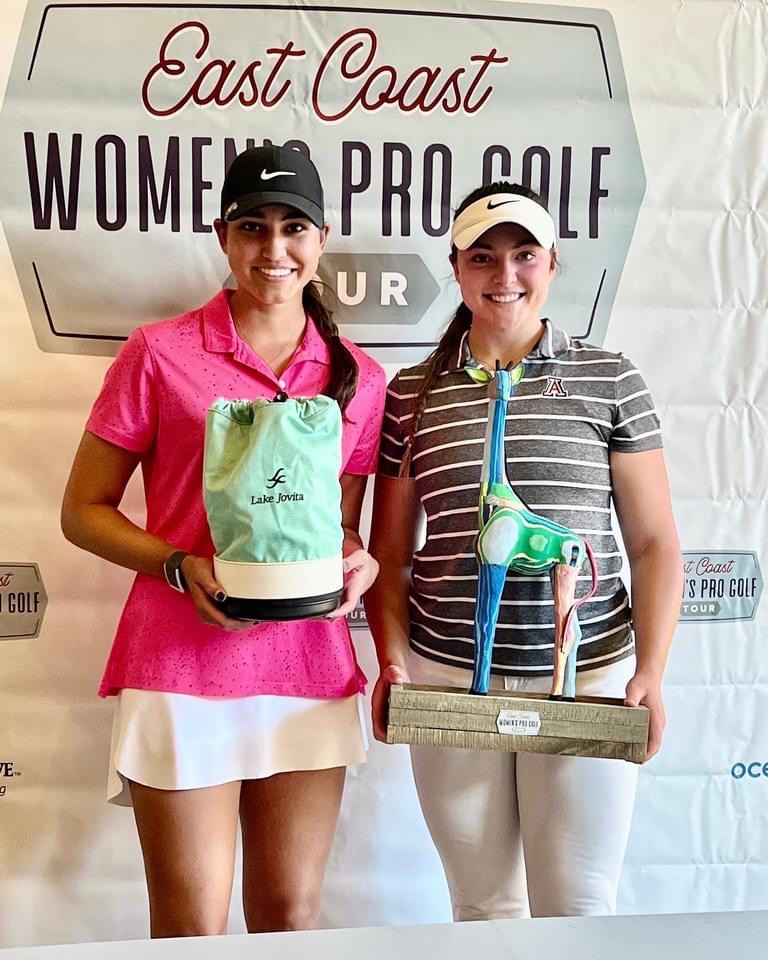Therese Warner burst into tears.
The newly minted professional wasn’t crying because she’d just notched her first professional win but rather because she was the benefactor of a great gesture in sportsmanship.
Warner — a 21-year-old from Kennewick, Washington — shot a final-round 2-under 70 at the PXG Women’s Match Play Championship, an event in Dade City, Florida, on the East Coast Women’s Pro Golf Tour, to finish at 7-under. Kynadie Adams, an 18-year-old high school senior from Gallatin, Tennessee, and Alabama women’s golf commit, forced a playoff with a 67. After signing her scorecard, Warner asked Adams’s father and caddie, Adrian, where they needed to meet for extra holes.
But there would be no playoff — Adams conceded, allowing Warner to collect the full first-place check for $10,000.
“I was in shock,” Warner said. “I still can’t believe that someone would be that kind and thoughtful. Without a second thought, she did that for me.”
The difference amounted to about $4,000 in Warner’s bank account, allowing her to keep the entire first-place check. Adams, playing as an amateur, could have collected a maximum of $1,000 without relinquishing her amateur status had she won the playoff and Warner would have received the second-place prize money, which would have been closer to $6,000. (The first-place prize would have gone back into the purse and been evenly distributed among the players who finished in the money.)

On the day of her 18th birthday, Adams showed she has wisdom beyond her years. She had the good sense to understand the circumstances. Having missed a 3-foot putt at the last hole, she was staying warm on the range, figuring there likely would be a playoff. Adams had finished first and had a discussion with her father about what to do about the unusual circumstances that could affect the tournament payout.
“She said, ‘That’s not right,’ ” Adrian Adams said. “Once we confirmed the circumstances, it was a simple decision.”
“I didn’t feel great about taking away money that I wouldn’t be given anyway,” Adams said. “People don’t realize the money difference. She’ll probably be able to enter a bunch more events.”
“I’ve been in the golf business at about every level for 25 years and this is a first,” said Mark Berman, founder of the women’s professional developmental circuit. “She told me, ‘The $1,000 for me does really nothing with me going off to college. But for Therese, just starting her pro career and what she’s been through, it’s everything.’ ”
Warner was in disbelief. They hugged. Warner cried.
“It almost made me cry,” Adams said.
Warner played at Arizona for two years before entering the transfer portal. She was planning to join the University of South Florida team. At the 11th hour, she asked herself, “Is this what’s best for me?”
She turned pro last month and improved to No. 4 on the ECWPGT – top-2 at the end of the season earn various exemptions into events such as the Colorado Women’s Open and PXG World Golf Village Championship later in the year. In fact, Warner didn’t sign up for the Lake Jovita tournament until the entry deadline was extended with the news of the addition of the Colorado Open exemption.
“At 11 o’clock, I was like might as well, right,” Warner said.
Adams, who celebrated her birthday with “a little brownie skillet thing,” was competing in her first tournament since October and said she learned “I can totally hang with the pros.”
Of her magnanimous gesture, she said, “I’m a competitor and I love winning. I feel still like I won.”
[mm-video type=playlist id=01es6rjnsp3c84zkm6 player_id=none image=https://golfweek.usatoday.com/wp-content/plugins/mm-video/images/playlist-icon.png]

